The Abbey of Bec-Hellouin
Note: Click on a photograph to see it displayed in a bigger size.
Foundation
Founded in 1034 by Herluin (born 995, died 1078), a Norman knight who left military service in 1031 in order to commit himself to a life of religious devotion, the Benedictine Abbey of Bec is situated in the département of Eure (27) in Normandy.
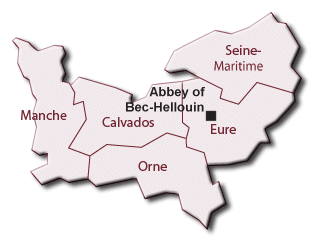
The village of Bec bears the name of the founder of the abbey: Le Bec-Hellouin, Hellouin being a variation in the spelling of the name of its founder Herluin. It's full title today is the Abbaye de Notre-Dame du Bec (The Abbey of Our Lady of Bec). Herluin, after leaving military service, first lived the life of a hermit, but he was soon joined by other disciples, including a man named Lanfranc in 1042, who was later to become Archbishop of Canterbury from 1070 until 1089 during the reign of the first Norman king of England, William I, or as he is better known, William the Conqueror. Lanfranc's succesor, Anselm, who was also part of the community of the abbey of Bec, was Archbishop of Canterbury from 1093 until 1109.
Its History
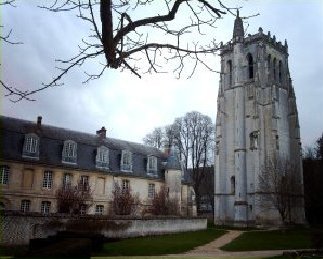
During the Hundred Years War between England and France, the war which included the burning of Joan of Arc in the Norman city of Rouen in 1431, the English army attacked and pillaged the abbey in 1418. After the war was over, from about 1450 to 1515, much work of reconstruction was carried out to the abbey. During the French Wars of Religion in the sixteenth century much of the abbey was damaged, and in 1591 the nave of the original abbey church collapsed.
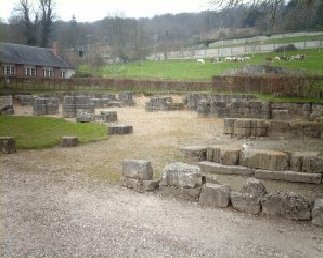
From about 1640 through to 1750 there was much building work and rennovation of the existing buildings. However, the French Revolution saw the expulsion in 1792 of the last remaining monks. Of the earliest buildings there now remains nothing much besides the fifteenth century St. Nicholas Tower and a pile of ruins. It was used from the time of the French Revolution until the end of the Second World War by the French Army. However in 1948 a group of Benedictine monks resettled there and began the process of restoration.
Connections with Canterbury, England
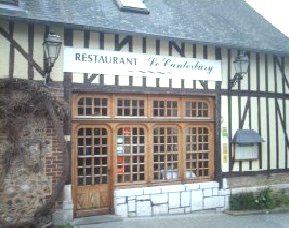
There are many ties still between the abbey and Canterbury, both in the abbey itself and also in the village, with various streets and restaurants being named after the English city - for example, the rue de Canterbury and the restaurant Le Canterbury (see photograph).
Plaque Commemorating Religious Ties
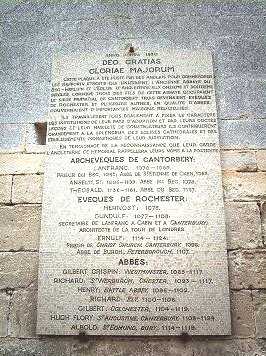
By the door to the still-standing tower of the orginal abbey there is a plaque on the wall that commemorates the links between the abbey and Canterbury, and lists archbishops of Canterbury (Archeveques de Cantorbery) and bishops of Rochester (Eveques de Rochester)that have come from the abbey, and Abbots (Abbes) of the abbey who have connections with England.
The Abbey Church Today
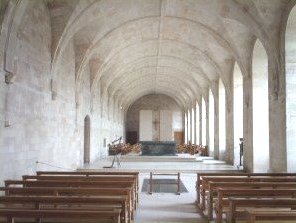
Part of one of the more recent buildings on the site is used by the monks as a church. This building was used as the refrectory during the eighteenth century. It is 75m long by 9m wide.
The Tomb of Herluin
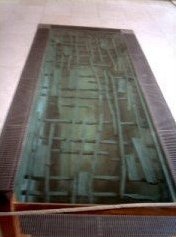
In the centre of the church there is a tomb let into the floor. This is the tomb of the founder Herluin. His relics were placed in their current resting place by the monks of the abbey in 1959, having been preserved even during the days following the Frnech revolution when the monks were evicted from the site and it was used by the French Army as a depot.
Visiting the Abbey
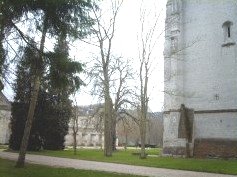
The abbey is open to the public most of the year, and admittance is free. There are certain areas of the site where the resident monks live and work which are private and inaccessible. Guided tours are also available if you are interested in finding out in much more detail about the history and the life of the abbey today. Parking in the village is free, but in the summer is likely to fill up fast, so an early start might be advisable.




 Contact Us
Contact Us